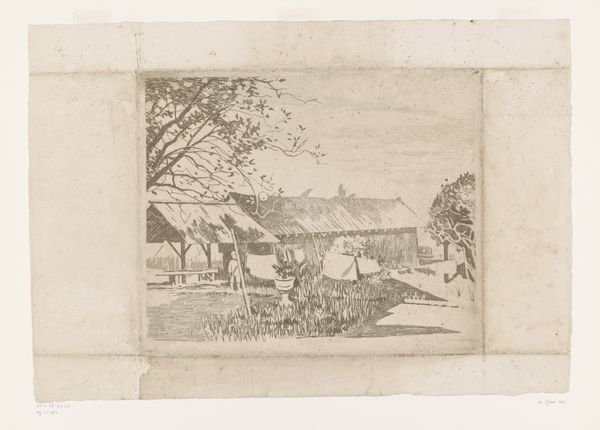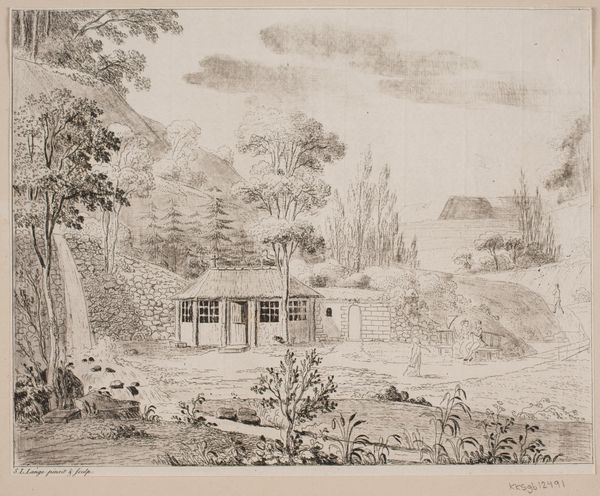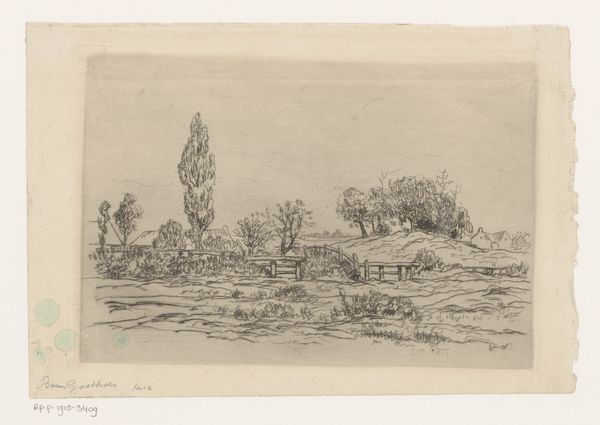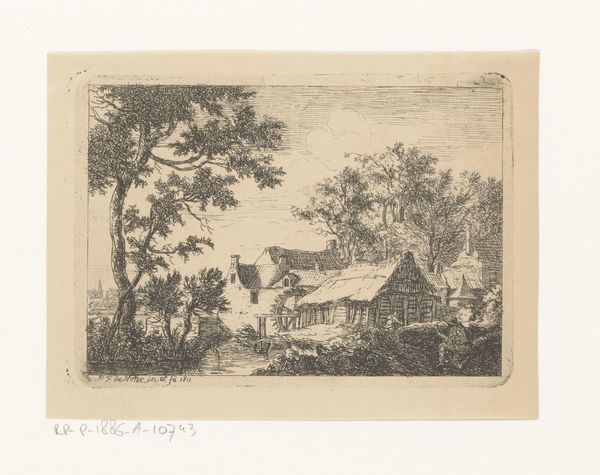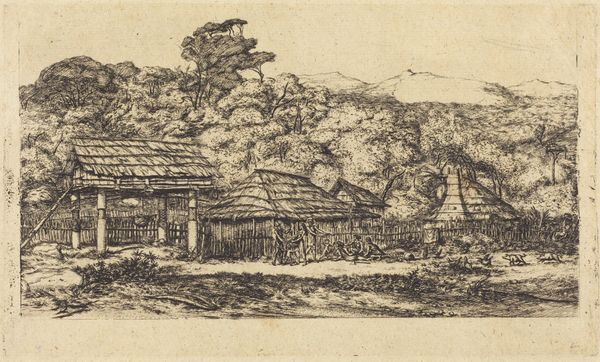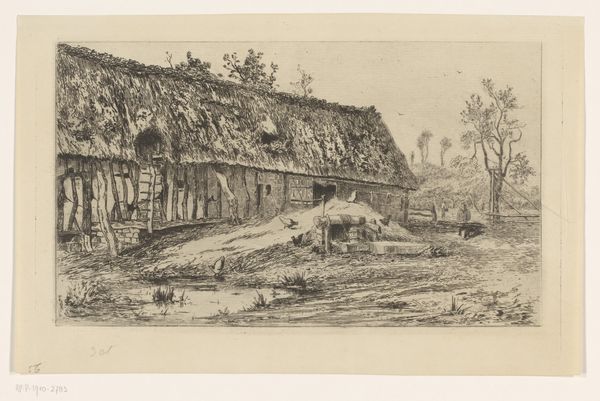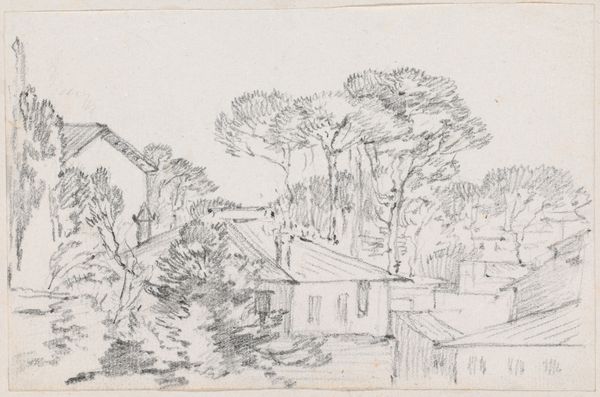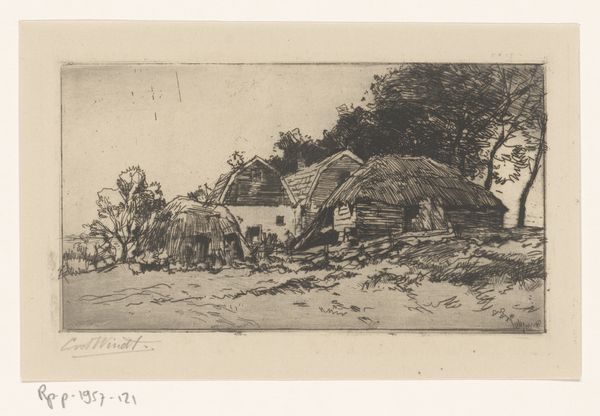
Huizen in de kampong met de vulkanen Salak en Gedeh op de achtergrond, Buitenzorg c. 1921
0:00
0:00
willemwitsen
Rijksmuseum
drawing, print, etching
#
drawing
#
dutch-golden-age
# print
#
pen sketch
#
etching
#
landscape
#
line
#
pen work
#
realism
Dimensions: height 390 mm, width 485 mm
Copyright: Rijks Museum: Open Domain
Editor: So, this etching is called "Huizen in de kampong met de vulkanen Salak en Gedeh op de achtergrond, Buitenzorg" by Willem Witsen, circa 1921. It's a landscape view, and I’m really drawn to the texture created by the etching. What stands out to you? Curator: I see an etching made through a very specific and material process of production: Witsen painstakingly manipulates metal and acid. Notice how that process records a very particular landscape and a social scene – the houses in the kampong. He's not just depicting a beautiful view; he's etching a scene of labor and living. Think about who built these houses, who lived there, and what their relationship was to the volcanoes in the background. The act of etching, usually considered a refined art form, captures vernacular architecture, raising questions about class and cultural exchange. How does this complicate our understanding of "high art"? Editor: That's a really interesting perspective! I was just appreciating the aesthetic, but now I see the contrast between the technique and the subject matter. So, you’re suggesting that Witsen’s choice of subject elevates everyday life to something worthy of artistic consideration? Curator: Precisely. Furthermore, think about the networks required to create this image: from the mining of the metals for the plate, to the making of the acid for the bite. The whole materiality indexes flows of global capital, connecting sites of extraction, production, and consumption. Does knowing this influence your viewing experience? Editor: Absolutely. It’s shifted my understanding completely. It makes me consider who this image was for, and how the consumption of the artwork ties back to these global processes. Curator: Right. It reframes what appears as just a pastoral landscape as embedded in broader material and economic relationships. Editor: Thanks, I never would have considered all that by just looking at it. Curator: The work really reveals a whole hidden dimension once we think of its making.
Comments
No comments
Be the first to comment and join the conversation on the ultimate creative platform.
